Imagine setting foot in a land where every turn uncovers a canvas painted with rolling hills, ancient vineyards, and cities that breathe life into history – welcome to Tuscany, Italy’s heartthrob.
This article is your golden key to unlocking the most unforgettable week in Tuscany with a plan that promises nothing short of amazement 😍
Tuscany has long been a muse for poets, artists, and travelers alike, mesmerizing everyone with its remarkable landscapes, unparalleled art, and culinary delights that are a feast for the senses. But how does one encapsulate the quintessence of this region in just seven days?
It might sound like a tall order, but fear not! I’ve crafted a meticulous itinerary that cleverly weaves through Tuscany’s must-see highlights and hidden gems, ensuring that your time is spent experiencing the very best it has to offer.
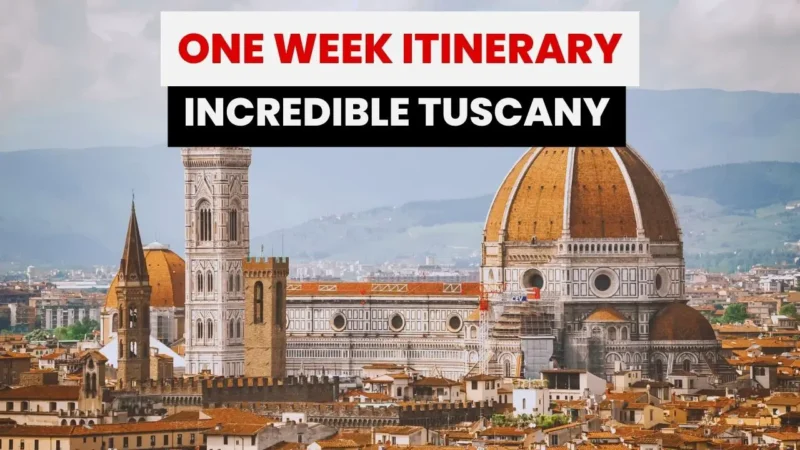
From the Renaissance allure of Florence to the medieval charm of Siena and the pristine countryside that beckons with promises of tranquility and adventure, this guide is your compass for an exhilarating journey.
With straightforward advice and insider tips, we’ll navigate through the essentials of travel planning – from where to indulge in the most tantalizing Tuscan cuisine to identifying the most scenic routes that are a feast for the eyes and the soul.
Let’s embark on this amazing journey together, creating memories in Tuscany that will linger like the sweet aftertaste of a fine Chianti.
Incredible One Week Tuscany Itinerary
With this itinerary, you can chose to base yourself in Florence and do day trips or you can stay in different towns as you move around. A car is the easiest way to get around.
Day 1: Arrival in Florence
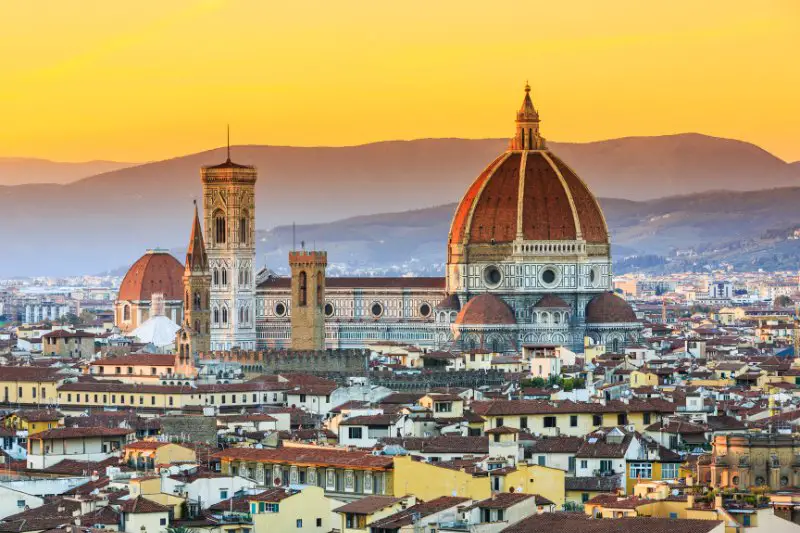
- Check into your hotel.
- Visit Florence’s historic city center; see the Duomo.
- Explore the Uffizi Gallery for Renaissance art.
- Dine on Tuscan cuisine at a local trattoria.
Day 2: Florence and Surroundings
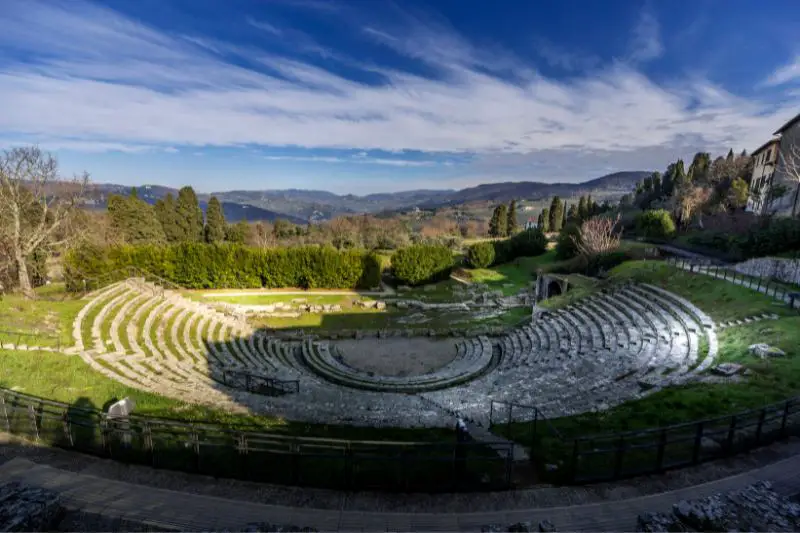
- Visit the Accademia Gallery to see Michelangelo’s David.
- Stroll through the Boboli Gardens for city views.
- Take a trip to Fiesole for ancient ruins and views.
- Enjoy the evening in the Oltrarno district.
Florence
In Florence, your adventure begins amidst the splendor of the Renaissance, where every corner holds a story, and every street leads to a masterpiece. The Duomo, officially known as the Cattedrale di Santa Maria del Fiore, stands as a testament to human ingenuity with its massive dome engineered by Filippo Brunelleschi. It’s not merely a church; it’s a symbol of Florence, showcasing the ingenuity and artistry of the Renaissance era.
As you wander deeper into the city, the Uffizi Gallery invites you through its doors to witness the legacy of Renaissance masters. Here, Botticelli’s “Birth of Venus” and da Vinci’s “Annunciation” captivate, offering a direct line to the past where beauty, art, and human potential found new expression. This gallery serves as a bridge, connecting you to the vibrant minds of the Renaissance.
Further enriching your journey, the Accademia Gallery houses Michelangelo’s David, a masterpiece of marble that transcends its form to embody the ideals of beauty and strength. Standing before David, you encounter not just a statue, but a statement about human capability and the reach of artistic ambition.
Beyond the city’s art-filled walls, Fiesole awaits. This ancient town, nestled in the hills above Florence, offers a tranquil escape with breathtaking views of the city below. Fiesole is not just a scenic spot; it’s a place steeped in history, from its Roman amphitheater to its medieval cathedrals, offering a perspective on the layers of time that have shaped this region.
Oltrarno, or “beyond the Arno” river, is a treasure trove of artisan workshops, quaint cafes, and hidden gardens, offering a glimpse into the daily lives of Florentines. Here, the spirit of the Renaissance is palpable, not in grandiose monuments, but in the meticulous craft of local artisans—woodworkers, jewelers, and leather craftsmen—whose studios dot the narrow streets.
Day 3: Siena
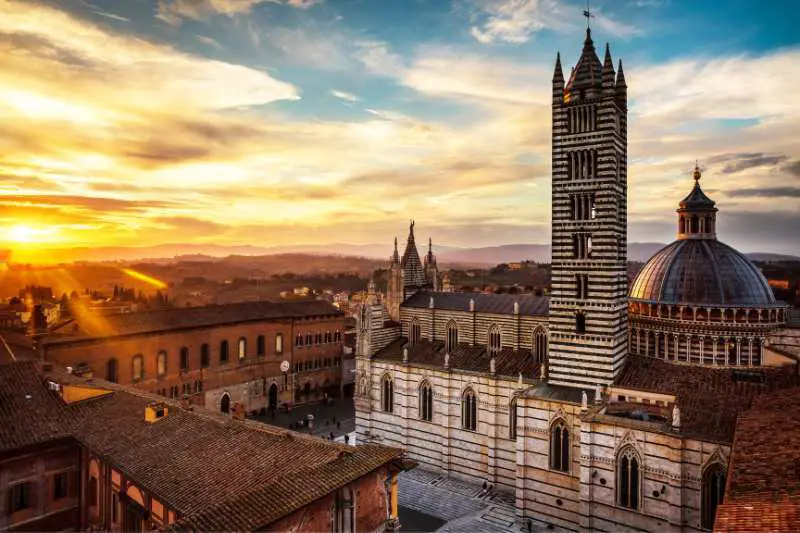
- Explore the Piazza del Campo.
- Visit the Siena Cathedral.
- Discover Siena’s contrade (districts).
- Sample local dishes at an osteria.
Siena
In Siena, you’ll find yourself wandering through Piazza del Campo, one of Europe’s most magnificent medieval squares. It’s the city’s social heart, famous for the thrilling Palio horse race. Imagine the energy and tradition bursting to life in this historic setting, offering a glimpse of Siena’s vibrant community spirit.
A short walk leads you to the breathtaking Siena Cathedral (Duomo), a masterpiece of Gothic architecture. Its striking facade and stunning interior, highlighted by distinctive striped marble pillars, embody the fusion of art and faith. The cathedral is not just for sightseeing; it’s an invitation to marvel at the artistic achievements of the past.
As you meander through Siena’s winding streets, you’ll encounter an array of small shops and local eateries, where the aroma of traditional Tuscan dishes fills the air. Sampling dishes like pici pasta, especially when it’s dressed in a hearty wild boar ragù, offers authentic flavors that connect you directly to Tuscany’s rich culinary traditions.
Strolling around Siena also means discovering its unique contrade, or districts, each with its own emblem and historic identity, adding layers to your exploration. The narrow medieval streets open up to hidden squares, lesser-known churches, and stunning viewpoints over the Tuscan countryside, making every turn an unexpected discovery.
Click here to read our full guide to Siena.
Day 4: Chianti Region
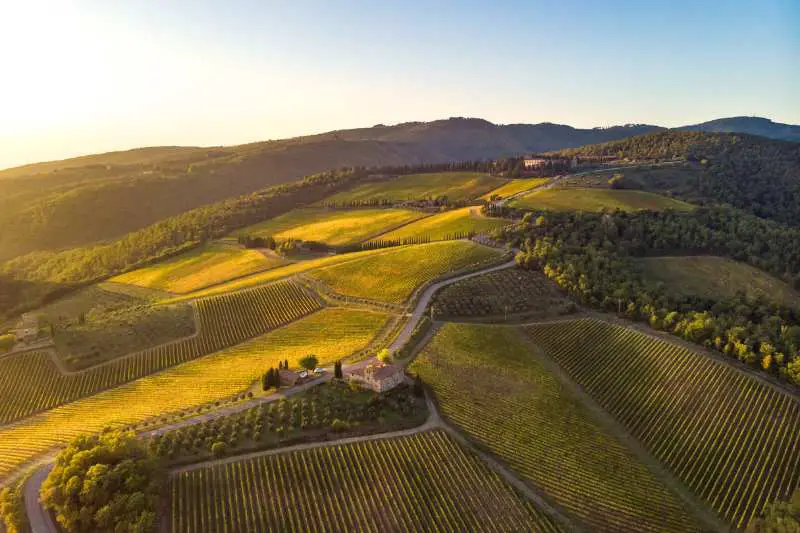
- Visit vineyards and wineries for tastings.
- Explore towns like Greve and Castellina in Chianti.
- Dinner at a vineyard with wine pairing.
Chianti Region
Exploring the Chianti region immerses you in the heart of Tuscany’s wine country, a landscape painted with vineyard-clad hills and dotted with ancient stone villages. Here, the art of winemaking comes to life in the local vineyards and wineries you’ll visit, where the tradition of producing Chianti Classico, the area’s signature ruby-red wine, is both a heritage and a passion.
Venturing into towns like Greve in Chianti and Castellina in Chianti, you discover the charm of Tuscany’s rural architecture and the warmth of its people. Greve’s triangular piazza and Castellina’s medieval fortress offer unique glimpses into the region’s history and culture.
Dining in the Chianti region is an adventure in itself, with menus boasting specialties like ribollita soup and bistecca alla fiorentina, perfectly complemented by a glass of local Chianti. This journey through Chianti offers more than just picturesque landscapes and delicious food and wine; it’s an invitation to experience the soul of Tuscany, where every meal and every vineyard tells a story of tradition, terroir, and time-honored craftsmanship.
Day 5: Pisa and Lucca
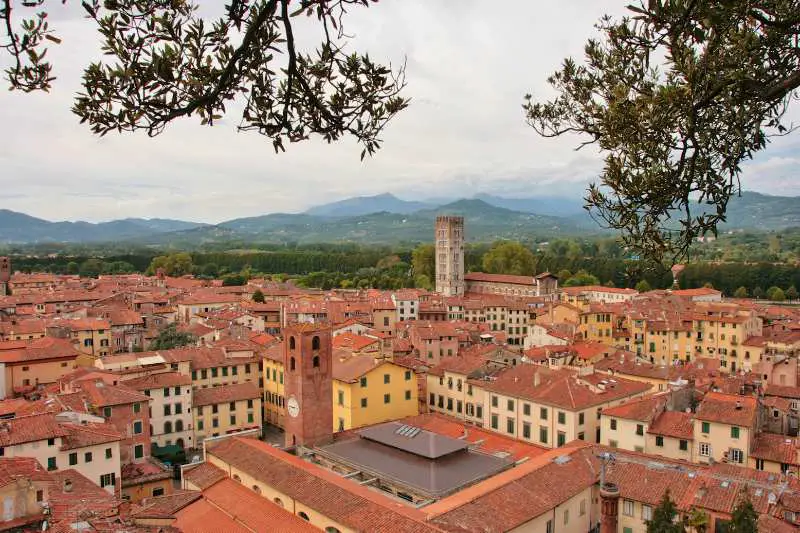
- See the Leaning Tower and Piazza dei Miracoli in Pisa.
- Cycle around Lucca’s Renaissance-era walls.
- Explore Lucca’s historic center.
- Try Lucchese cuisine.
Pisa
In Pisa, you’ll be drawn to the iconic Leaning Tower, a marvel of medieval engineering that has captured imaginations for centuries. Standing in the Square of Miracles (Piazza dei Miracoli), this tower invites not just a photo, but a moment of awe at its curious tilt and the history behind its unintended lean.
But Pisa is not just about its leaning tower; the square is a UNESCO World Heritage site, home to stunning monuments like the Pisa Cathedral and Baptistery, showcasing impressive Pisan Romanesque architecture and offering a deep dive into the city’s rich sacred art and historical significance.
Click here to read our full guide to Pisa.
Lucca
In Lucca, you’re enveloped by the Renaissance walls that still encircle the city center, a remarkable preservation inviting you to step back in time. These ancient defences now serve as pathways for leisurely strolls or bike rides, offering panoramic views of both the historic city and the rolling Tuscan countryside beyond.
Venturing within these walls, the charm of Lucca unfolds in its cobblestone streets, Romanesque churches, and picturesque piazzas.
Key sights include the Guinigi Tower, where you can climb to the top for a unique perspective over Lucca, marked by ancient rooftops and a crown of trees that whimsically top the tower itself. Another must-visit is the San Michele in Foro, a stunning church that showcases the intricate craftsmanship of Lucca’s Romanesque architecture.
Dining in Lucca means indulging in the region’s culinary specialties. Taste the local tortelli lucchesi, a delicious pasta filled with seasoned meat, or sample a slice of buccellato, a sweet bread that captures the essence of Luccan baking traditions.
Day 6: Val d’Orcia
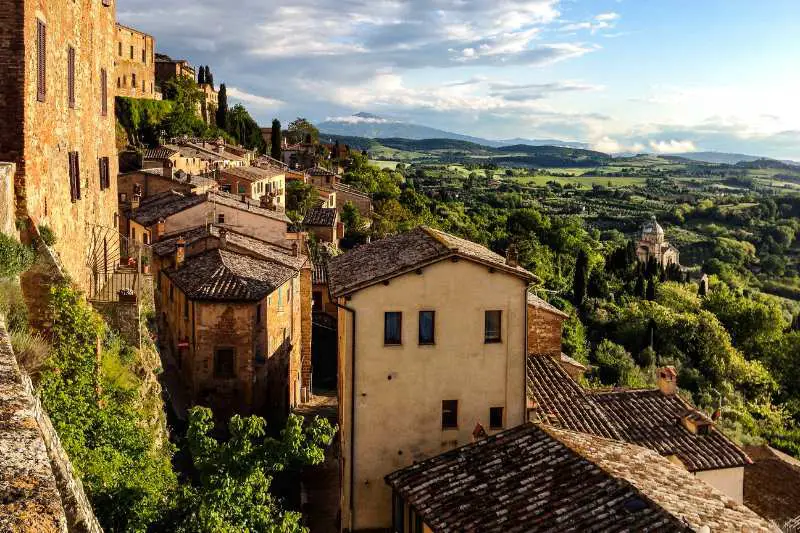
- Visit Montalcino and Pienza; enjoy historic centers and Pecorino cheese tasting.
- Brunello di Montalcino winery tour and tasting.
- Dinner in Montepulciano, tasting Vino Nobile.
Val d’Orcia
In Val d’Orcia, you’ll immerse yourself in a landscape that feels like stepping into a Renaissance painting. This area, recognized by UNESCO for its quintessentially Tuscan scenery, features rolling hills, cypress-lined roads, and vineyards as far as the eye can see.
Here, the charming town of Pienza offers a glimpse into ideal Renaissance urban planning, with its harmonious squares and alleys inviting exploration. Pienza is also known for its pecorino cheese, a delicacy crafted from sheep’s milk and a must-try for any food enthusiast.
Montalcino and Montepulciano, two other jewels within Val d’Orcia, are synonymous with fine wine. Montalcino is the birthplace of Brunello di Montalcino, one of Italy’s most prestigious wines, while Montepulciano prides itself on Vino Nobile di Montepulciano. Both towns offer wine tours and tastings, allowing you to connect with the local culture through its most celebrated produce.
Val d’Orcia’s allure goes beyond its picturesque towns; the countryside itself, with its sprawling olive groves and vineyards, invites leisurely drives or bike rides, capturing the essence of Tuscany’s rural beauty.
Day 7: Return to Florence/Departure

- Free morning in Florence for shopping or relaxing.
- Prepare for departure.
Concluding an exhilarating week-long adventure through Tuscany with this meticulously crafted plan promises not just a tick off your bucket list, but an immersive dive into the heart of Italian culture, cuisine, and unmatched scenery. From the rolling hills of the countryside to the architectural marvels and art-filled cities, each day unveils a new chapter of Tuscany’s timeless allure, leaving you with memories that resonate long after the journey ends.
As you reflect on this whirlwind tour, it’s the unique blend of tranquil vistas, vibrant local life, and the rich tapestry of history and gastronomy that truly encapsulates the spirit of Tuscany.
Learn more about the most amazing door in the world that you can visit while you are in Florence here. Find the most beautiful places in Tuscany here and read about nearby Cinque Terre here – the perfect add on for this itinerary. You can also find all our travel guides to Central Italy here.
